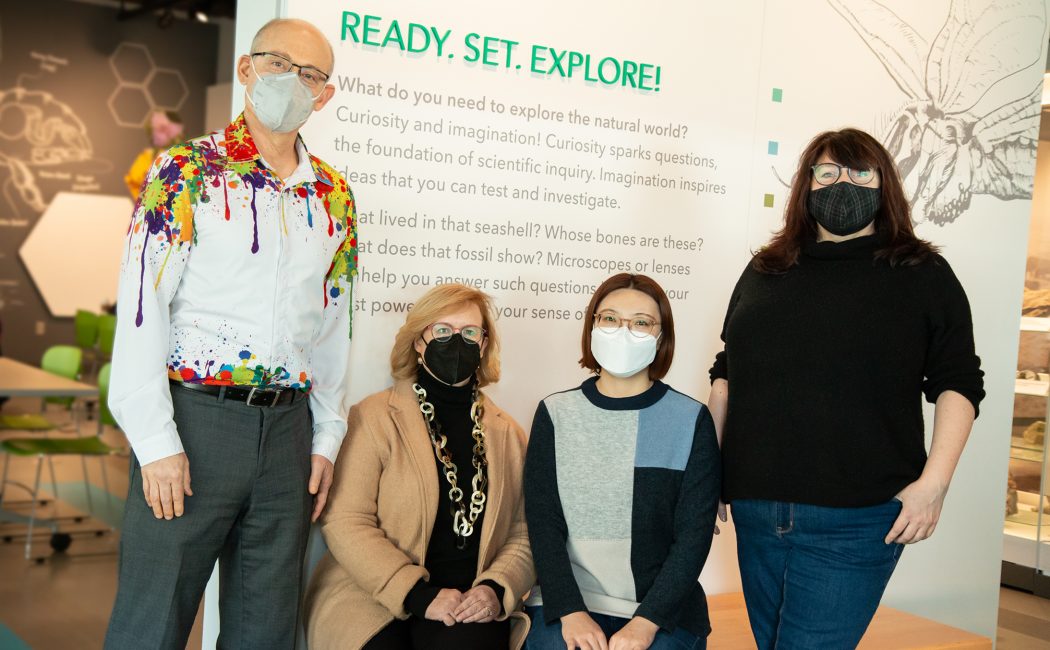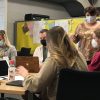
Given the speed at which technology changes and evolves, one can only imagine what media will look like in five years — and beyond.
But Nebraska researchers are collaborating with the state’s K-12 educators, artists and administrators to do just that.
Guy Trainin, professor of education in the Department of Teaching, Learning & Teacher Education, is leading a five-year pilot project to promote teaching innovation through arts and emerging media in Nebraska public schools.
Emerging media is loosely defined as communications of all types based on digital technologies, increasingly with interactive components. Virtual reality, social media apps, video creation technology and wearable media, such as an Apple Watch, are just a few examples.
The Teaching with Arts and Emerging Media (Art TEAMS) project is funded by a $1.9 million grant from the U.S. Department of Education, and is a collaborative effort between Trainin’s team and the Johnny Carson Center for Emerging Media Arts within the Hixson-Lied College of Fine and Performing Arts.
Art TEAMS will establish a professional development curriculum for 40 Nebraska teachers to integrate arts and emerging media into their curricula. Researchers aim to foster inclusive, arts-based classroom approaches that embrace students’ cultures and voices.
Along with Trainin, other project researchers include Kimberly D’Adamo, TLTE graduate student/lecturer and former teacher; HyeonJin Yoon, MAP Academy research assistant professor; and Lorinda Rice, Lincoln Public Schools art curriculum specialist.
Beginning in summer 2022, the first cohort of 20 teachers recruited from public schools throughout Nebraska will participate in an intensive, two-week curriculum at the University of Nebraska–Lincoln.
Teachers will be teamed in pairs — for example, a science teacher and an art teacher — to encourage them to think about how their work can intersect.
“We also are integrating teaching artists — artists who work with teachers in schools — and museum educators, school administrators and teachers from other disciplines so we can understand what art instruction looks like from every perspective,” Trainin said. “We want to encourage professional learning teams so teachers can develop ways to integrate the arts across all content areas.”
During the 2022 and 2023 academic years, participants will receive coaching sessions from Trainin and his team, who will visit classrooms to observe teachers and provide feedback.
The curriculum also includes two exhibitions, where work of the students in the participating educators’ classes will be displayed.
“The training is intense at the beginning,” Trainin said. “Then we work with them throughout the school year to ensure they are supported, and that they have opportunities to consult with us and to grow their knowledge.”
The second cohort will begin in summer 2023, following the same two-week instruction and coaching. Teachers who complete the two-year curriculum will earn 18 graduate-level credits.
Teachers realize how different the world is for their students, so they are looking for ways to connect and make school relevant.”
— Guy Trainin, principal investigator
Trainin notes that with such rapidly evolving technology, a sort of “fourth industrial revolution” is unfolding.
“In the future, we will automate whatever we can automate,” he said. “So where humans come in is where they can create and think in integrated ways. This is where kids can find a future.”
One of the project’s goals is to help teachers who are “digital natives” — those who have grown up in the digital information age — envision what skill sets are needed for students graduating in 2030 and 2040.
“We believe the arts and emerging media is one area in which students can thrive,” Trainin said. “They need to be able to express themselves creatively to deal with the huge changes likely to happen.”
As the professional learning model matures, the goal is to share it with a broader group of teachers across the state and throughout the U.S.
“Teachers realize how different the world is for their students, so they are looking for ways to connect and make school relevant,” he said. “With time, this curriculum will become more and more relevant for teachers, and more meaningful for their students as they prepare for their future.”
Learn more about this project in the CYFS Research Network. This project aligns with the UNL Grand Challenge of science and technology literacy for society.
Photo gallery





